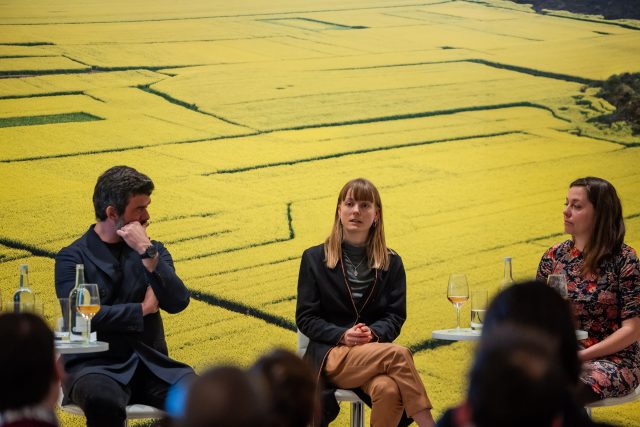Pasqua announces Saatchi Gallery exhibition sponsorship
Pasqua has announced its patronage of a new exhibition at London’s Saatchi Gallery this summer, marking the first time that the Valpolicella producer has sponsored artworks outside of Italy.

The exhibition, titled Metamorphosis: Innovation in Eco Photography, will run at the Saatchi Gallery near Sloane Square from 26 May to 28 July.
“The Saatchi Gallery is a role model for us,” explained CEO Riccardo Pasqua at the announcement. “It was started by the vision of great entrepreneurs who wanted to launch the careers of great talents. It overlaps with our vision – in our small way we have also been trying to nurture local talents.”
Pasqua, which celebrates its centenary next year, started patronising the arts six years ago: “We were taking a risk by doing things in a way that nobody had done before. For an Italian winery from a very traditional, conservative region like Veneto to do things like this is pretty rare.”
Previous Pasqua artistic collaborations include its commissioning of SUPERFLUO at last year’s ArtVerona.
“These collaborations generated a lot of great ideas. Through their work, these artists were also communicating our values.”
The artists that will feature in the Metamorphosis exhibition are photographers Almudena Romero, Edd Carr, Scott Hunter and Hannah Fletcher.
Appearing on a panel alongside Pasqua, Romero and Fletcher explained their approaches to art.
“Like winemaking, collaboration is central to any creative process,” Romero argued. “Working with other professionals is fundamental to enriching work and our understanding of nature.”
Nature plays an integral role in Romero’s work, as she imprints her designs using chlorophyll onto leaves, using plants as photographic substrate: “We understand things better when we visualise them – visual art is a powerful tool for shaping perceptions.”
Fletcher, who also utilises organic matter in her creations and is co-director of the London Alternative Photography Collective, echoed this sentiment, suggesting that photography is an inherently scientific process, and that incorporating science into artworks can help the viewer to better comprehend the world around them: “Scientific papers are only read by scientists – [science] needs to be communicated on a more open level.”
View this post on Instagram
Above: an example of Romero’s work
Partner Content
View this post on Instagram
Above: an example of Fletcher’s work
For Pasqua, the connection between the art and the natural world ties in with its own sustainability targets, which include the aim to have 20% of its production be organic by 2026 and the goal of having more than two-thirds of its energy come from renewable sources. The company is also Equalitas certified, meaning that it publishes an annual sustainability report.
“It is inevitable – the whole industry needs to pursue sustainability,” Pasqua argued. “The Italian wine system is already fairly advanced when it comes to things like organics.”
Aesthetic and environmental considerations do not always easily sit side by side. Posed with the question of whether alternative packaging, such as cans or paper bottles, might be adopted for some of its range, Pasqua said that the idea was “always under discussion”, but that, for the moment, “glass is still the proper container” that conveys the “prestige and artisanality” of the wines within, but that the company has been “working on reducing the weight of the glass bottles we use”.
Asked by the drinks business whether the company might release a wine with a special label that ties in with the exhibition, Pasqua said: “That’s actually a very good idea! Usually I’m the one at the company proposing new labels and designs, and the team has to rein me in and tell me that wine is not a fashion business.”
While no such label is in the works at the moment, Pasqua expressed his belief that those who see the exhibition will have an experience comparable to that of sipping a fine wine: “You cannot walk out of a place like this without having emotions.”
“This is not a simple moment for the world of wine,” he explained. “The new generation of consumers are seduced by other categories, like mixology and RTDs. The challenge for the wine industry is to get their attention. Wine is not just an incredible label and an artisanal product – we have to convince younger people that wine is cool.”
“It’s a puzzle of many pieces,” Pasqua suggested. “You need great projects like this to convey the message.”
Related reading:
Exploring the pairing potential of Cecilia Beretta
Related news
And they're off! Bordeaux en primeur campaign starts




